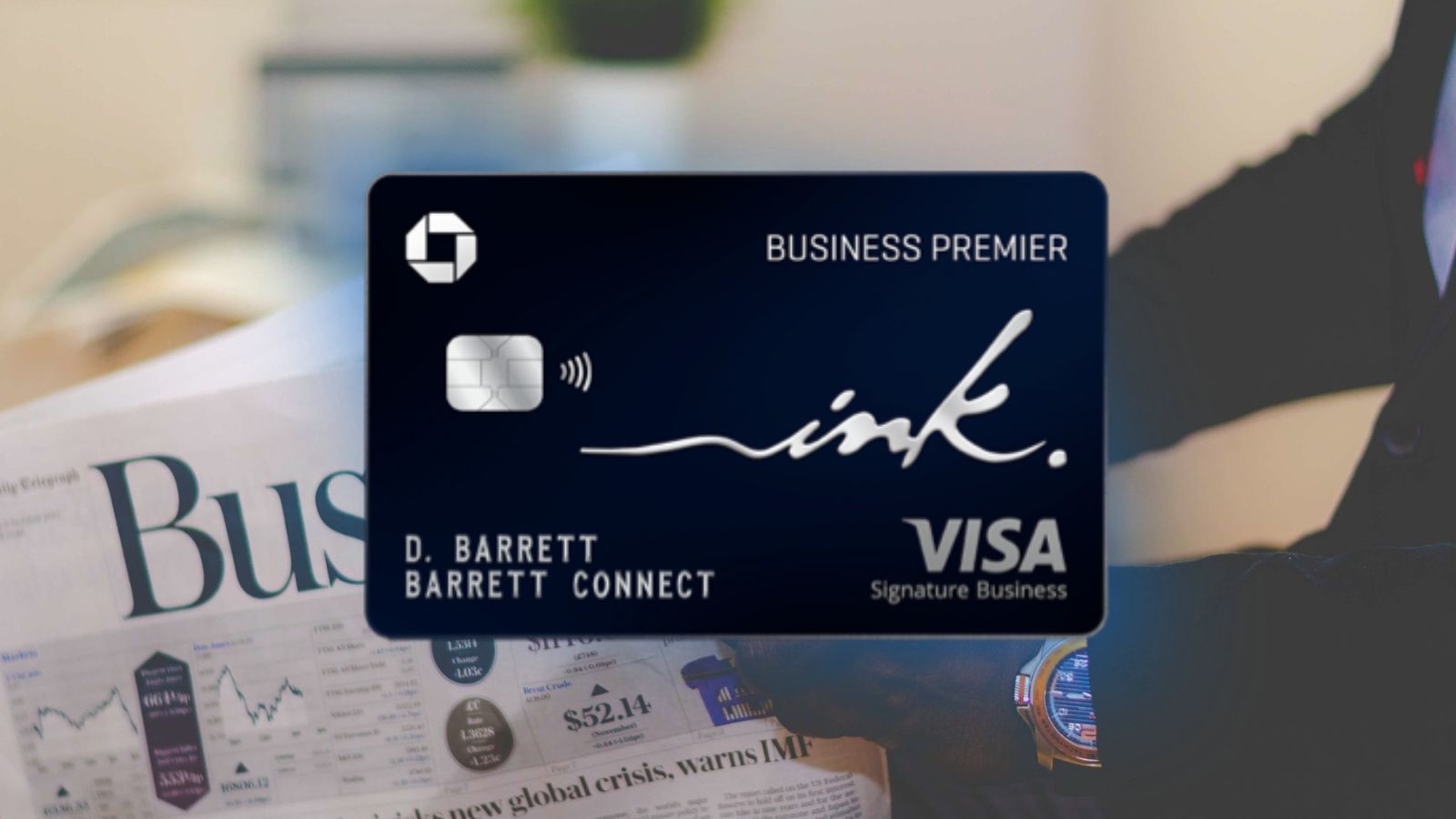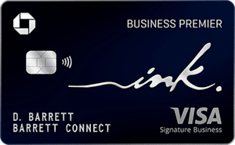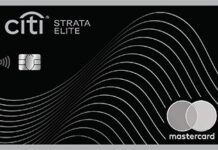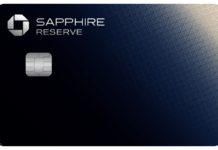When Chase first debuted a new Ink Business card, we were excited…until we learned about strict rewards limitations that aren’t an issue with other Ink Business cards. With this one, you can’t move rewards to another card or to any travel partner program. Boo! However, it can be an decent choice for a cash back card for some people. Here’s our full review.

Chase Ink Business Premier Current Welcome Offer
| Card Offer and Details |
|---|
 ⓘ $695 1st Yr Value EstimateClick to learn about first year value estimates $1,000 Cash Back ⓘFriend-ReferralThis is a friend-referral offer. A member of the Frequent Miler community may earn a referral bonus if you are approved for this offer $1K after $10K Spend in the first 3 Months$195 Annual Fee Information about this card has been collected independently by Frequent Miler. The issuer did not provide the details, nor is it responsible for their accuracy. FM Mini Review: This is an almost 1 to 1 copy of Capital One's Spark Cash Plus card, but the Chase card throws in 2.5% earnings on very large purchases. Unfortunately, the Chase card also has a slightly higher annual fee. The biggest disappointment about this card is that, unlike other Chase Ink cards, the rewards cannot be moved to other Chase cards to improve their value. Even though this card technically earns Ultimate Rewards points, it's best to think of it as a straight up cash back card. Click here for our complete card review Earning rate: 2.5% cash back on purchases of $5,000 or more ✦ 5% back on travel purchased through Chase Travel(SM) ✦ 2% cash back on all other spend ✦ 5x Lyft through September 2027 Base: 2% Portal Flights: 5% Portal Hotels: 5% Card Info: Visa Signature Business Charge Card issued by Chase. This card has no foreign currency conversion fees. Noteworthy perks: Purchase protections ✦ Cell phone protection (up to $1K per claim) ✦ Travel protections |
Chase Ink Business Premier Review
The Ink Business Premier is a charge card, not a credit card. That means that there’s no explicit credit limit and that you must pay the bill in full each month. The card earns 2.5% cash back for purchases of $5K or more, and 2% back everywhere else, making it a reasonable choice for those with large business spend who are looking for a single business card with decent cash back rewards. Unfortunately, unlike other Chase Ink cards, you can’t move rewards to other cards in order to make them transferable to partners, nor can you product change it to another Ink card. Think of this as being exclusively a cash back card…with a $195 annual fee.
This would be an exciting product if points could be moved to other cards that earn Ultimate Rewards. Without that ability, it’s impossible to get better than 1 cent per point value from your rewards and it’s therefore much less interesting.
- Annual Fee: $195
- Authorized User Annual Fee: none
- Foreign Transaction Fee: None
- What points are worth: 1 cent per point. Although the Chase Ink Business Premier earns Ultimate Rewards, you can’t move rewards to other cards in order to make them transferable to partners. So, it’s really just a cashback card.
- Best Use for Points: Cardholders can redeem points for 1 cent each either as statement credits or as cash back. Points can also be used to pay for travel or gift cards, but it doesn’t make sense to use your points in that way since you won’t earn rewards on those purchases. It’s better to redeem for cash back and pay with your credit card for these things. Unlike all other cards that earn Ultimate Rewards points, with this one you cannot move points to another card or to another cardholder in the same household or with the same business.
- Earning Categories:
- 5% on purchases through Chase Travel℠
- 2.5% on purchases of $5,000 or more
- 2% everywhere else
- Travel Protections:
- Trip Cancellation/Interruption Insurance
- Trip Delay Reimbursement
- Baggage Delay Insurance
- Auto Rental Collision Damage Waiver
- Purchase Protections:
- Cell Phone Protection: Up to $1K per claim.
- Fraud Protection
- Zero Liability Protection
- Purchase Protection
- Extended Warranty Protection
- Who’s this card for? Businesses who want cash back and spend a lot each year on large purchases.
- Is the Chase Ink Business Premier a keeper? The question is whether this card is worth its annual fee for those who are happy with cash back. The answer is… maybe. If you spend $40K or more per year on purchases of $5K or greater, then this card has an edge over a fee-free 2% cash back card. On the other hand, with Bank of America, it’s possible to get 2.62% back on all purchases with a fee-free card. If you can qualify for that, it’s obviously a much better option than paying $195 for this Chase card that earns 2.5% back at most.
Chase Ink Business Premier Pros and Cons
Pros
- 2% cash back everywhere and 2.5% towards large purchases is pretty good.
- Good travel protections.
- Often has an excellent welcome offer.
- Doesn’t add to your Chase 5/24 status.
Cons
- No spending multipliers for dining, travel, or supermarkets.
- Car rental insurance is officially limited to rentals for business purposes within the USS.
- Points can’t be transferred, making it effectively a cash back card.
Chase Application Tips
- 5/24 Rule: You most likely will not get approved for a new card if you have opened 5 or more cards (with any bank) within the past 24 months. Most business cards do not count towards that five card total. Business cards that DO count include: TD Bank, Discover and the Capital One Spark Cash Select, Spark Miles and Spark Miles Select.
- 24 Month Rule: If you’ve previously had a card before, you can only get a welcome offer on that card again if you no longer have the card AND if it has been more than 24 months since you last received a welcome offer for that card. This rule does not apply to the Sapphire Preferred and Reserve cards (see below). There can be exceptions with some business cards.
- Sapphire cards: The Sapphire Preferred or Sapphire Reserve cards no longer have a family rule that prevents you from getting one if you currently have the other. However, both now have significant limitations that may prevent you from being eligible for a welcome offer if you've previously had the same card. In that event, you'll get a pop-up window that tells you that you're not eligible before you get a credit check and will ask whether or not you want to proceed with the application without the welcome offer attached.
- Southwest "Family" Rules: Chase applies additional "family" rules to the Southwest cards. You're not eligible for the welcome offer on a personal Southwest card if you currently have one, or if you've received a welcome offer on any personal Southwest card within the last 24 months. This doesn't apply to business cards. You also can't be approved for the Southwest consumer card if you already have one open.
- IHG "Family" Rules: You're not eligible for the welcome offer if you've received a welcome offer on any personal IHG card within the last 24 months. You also can't be approved for another IHG consumer card if you already have one open. You can have both an IHG personal and an IHG business card.
- Ink "Lifetime" Rule: You "may not" be eligible for the welcome offer on an Ink no-annual-fee card if you have ever had the same card or any other Chase for Business card without an annual fee. In addition, you may not be eligible for a welcome offer on a Chase Ink Business Preferred card if you currently have the card or have had it in the past. We don't know how often this is enforced.
- 2 per month Rule: Most applicants are limited to 2 new cards per 30 days. Business cards are usually limited to one per 30 days.
- Marriott cards: Approval for any Marriott card is governed by a labyrinthine set of unintuitive rules. You can see the full eligibility chart here.
- Card Limits: Chase doesn't have a strict limit on the number of cards that you can have, but it does place limits on the total amount of credit that they will issue you across all cards. Because of this, reconsideration can sometimes be successful by moving credit from one existing card to the new card that you want.
- Application Status: Call (888) 338-2586 to check your application status.
- Reconsideration: If denied, call (888) 270-2127 for personal cards, or (800) 453-9719 for business cards, and ask for your application to be reconsidered.





Chase Business Bankers seem to have offers for $1,200 after spending $10k – worth checking if you want this card.
.
As points from the Cap One Spark Cash Plus can be converted to transferrable points, seems like the more flexible card. In spite of the 0.5x pop on the Chase card for big purchases.
If you intend to use the card to pay taxes, just remember there’s a hiccup with Chase business cards. Link your card to your PayPal account and process the payment via PayPal. Hope this helps.
There’s a higher fee now to pay taxes with a business card. No longer worth it.
The SUB is $1,000 minus $195 AF, which is $805. But, the 1st year value is only $705; that seems odd. Not to mention the additional 2% return from meeting the $10k minimum spend.
Great question. The way we calculate first year value is by taking the estimated value of the signup bonus ($1,000 in this case) minus the first year annual fee ($195) minus the “cost of meeting minimum spend.” This last part is the confusing part. We needed to bake into the formula a way to make it clear that a signup bonus that requires very large spend is not as good as one that requires a small amount of spend. Originally we assigned 2% as the cost of spend for this purpose, but we also add back in the value of the rewards earned on that spend and so when a card earns more than 2% back in rewards, the old formula made it look like bigger minimum spend requirements were better. So, we changed the cost of spend to 3% – rewards earned. This bonus requires $10K spend. 3% = $300 minus $200 earned from that spend = $100 “cost of spend”.
Thanks. That is interesting. I understand the math now, but I think this formula works fine for rewards whose RRV can exceed $0.01, not necessarily for straight cash back.
Additionally, I don’t know of many cards that reward 3% cash back on all spend.
Highly thoughtful. Depending on a person’s specific circumstances, the opportunity cost might be even higher. Give the Premier the benefit of the doubt and say 2.5 percent cash back on all spending. On the excess MSR, let’s say the alternative card earns 2X. With a transfer bonus to (say) Air France, you’re at 2.5X. Redemption values vary, of course. My AF average redemption is 2.5cpp. In my case, the opportunity cost is 6.25 percent (of the excess MSR). Nearly 4 percent differential. Takeaway: each person ought to do their own math.
Greg, great article! Since you did go into depth on business cc, I have a question: P2 and I have two separate corporations. We each just got the IHG business cc for his and her businesses. Do I have to wait 24 months to apply for another IHG business cc for each other businesses or does IHG view the corporations as the individual entity (not the individual person). The plan is to have two great weekend trips a year…
Great question. I know with Chase Ink cards you don’t have to wait, but I’m not sure whether the same rule applies with co-brands like the IHG card. There’s not much downside to testing it: yes they’ll do a hard pull but that would be the only downside if denied.